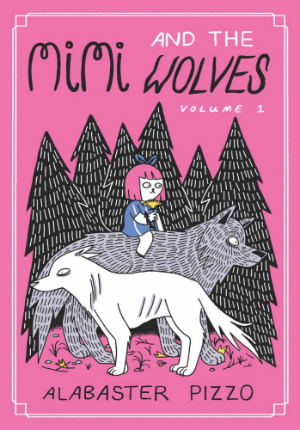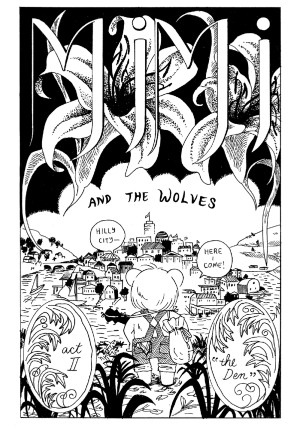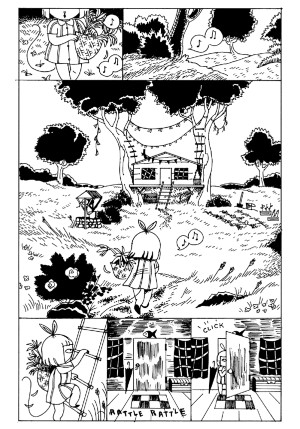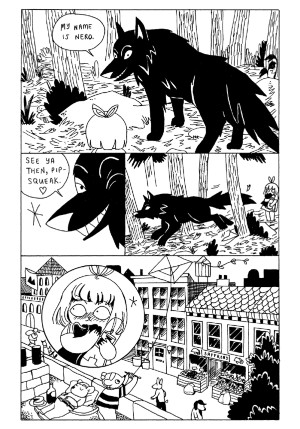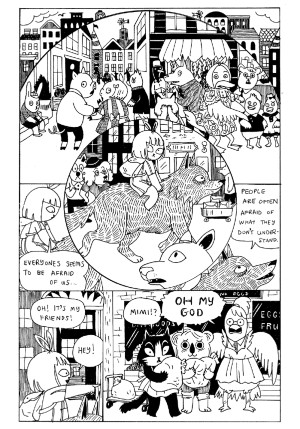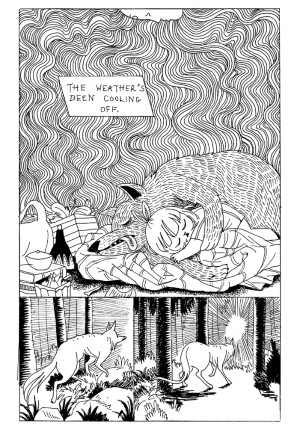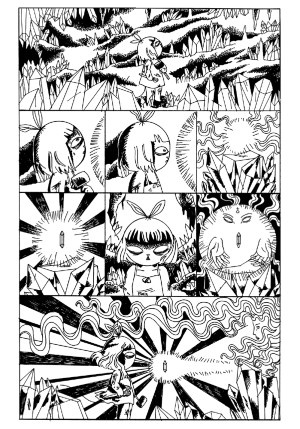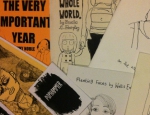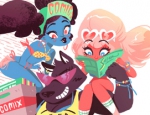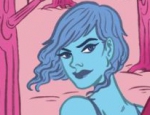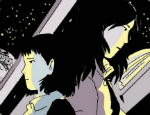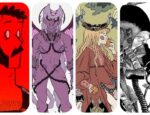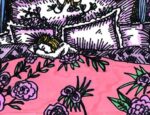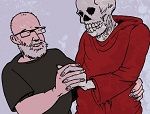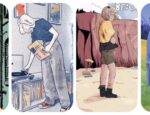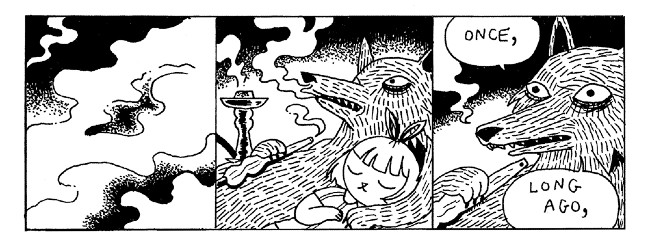
If you’re a regular on the indie comics circuit you may already have been aware of Alabaster Pizzo’s Mimi and the Wolves in its self-published incarnation. Beginning in 2013, Pizzo had previously published the first three chapters as serialised comics. In recent years in the UK, Avery Hill Publishing acted as distro for them. and co-founder Ricky Miller stongly recommended them to me some time ago. Miller is, of course, the gent who first brought Tillie Walden to my attention long before AHP published her work, so I tend to listen to what he has to say about emerging talent…
That enthusiasm evolved into a fuller commitment last year when Avery Hill published the first volume of Mimi and the Wolves, collecting all the material so far into one handsome hardcover package. Proof again that the London-based publisher have the keenest eye in UK indie comics for up-and-coming artists, with their seasonal publishing schedules always among the most exciting of the year’s announcements.
Mimi and the Wolves takes place in a world where anthropomorphised animals exist side by side among more feral versions. Mimi lives within the boundaries of the Evergreen Woods with her companion Bobo. Since childhood she has had mysterious recurring dreams of demonic creatures and a god-like being but the meaning of these visions has eluded her. When Mimi strikes up an unlikely friendship with the wolves Ergot and Ivy – much to the dismay of the local townsfolk who do not trust the forest-dwelling predators – she begins to realise she may have a more mystical destiny.
What are her links to the goddess Venus that the wolves venerate? Who is the other figure who haunts her dreams and what is their role in events? Is her friendship with the wolves all that it seems? And is Mimi risking everything in her quest for self-discovery as she becomes almost indoctrinated into their world?
While Mimi’s story is the main thrust of Mimi and the Wolves the book has a huge, sprawling cast of supporting players including Mimi and Bobo’s friends in the local town and a wider group of lupine characters within the confines of the woods. Pizzo’s tale is full of narrative and visual contrasts. Mimi’s adventures are replete with foreboding and foreshadowing, employing overt symbolism and asking readers to piece together its sometimes oblique clues and teasers. The subplots revolving around the villagers, however, are far more down-to-earth and relatable, focusing on their connecred relationships or in the case of banjo-playing newcomer Kiko, on the past she has mysteriously and poignantly left behind.
This is echoed also in Pizzo’s art with its cute anthropomorphic characters nevertheless living in a world which can be unforgiveably brutal, and the incongruities between visuals and adult themes which serve to accentuate the humanity (ironically) of its animal characters. Pizzo combines traditional tightly-panelled layouts with more inventive compositions that place panels within or over each other. It’s a playfulness with multiple perspectives that gives a greater sense of both time and place. Dream sequences and flashbacks, in particular, have a considered design sensibility that emphasises the characters’ lack of control of their destinies in the face of the book’s supernatural elements.
This is the first volume of a story of undetermined length at this stage so it sets up a lot but, equally, resolves very little by this opening book’s end. But amongst all the tapering plotlines and intriguingly ambiguous motivations there’s also some beautiful craft in evidence here. Pizzo is a consummate visual storyteller, communicating so much about her characters and their world simply through their expressions and physical interactions. There’s a reason she was Broken Frontier Award-nominated for 2019. Check out this first volume of Mimi and the Wolves and find out exactly why for yourselves
Review by Andy Oliver





